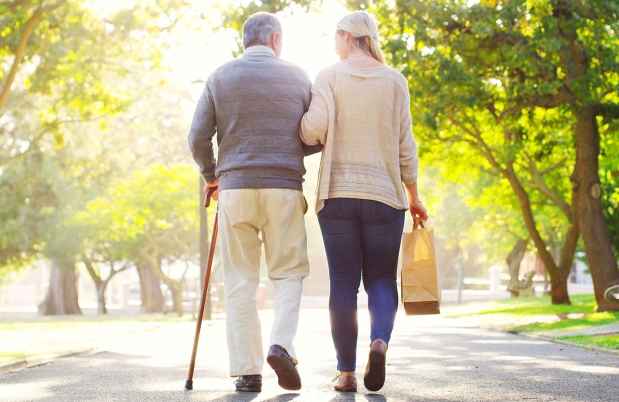Using New Technology to Track Senior Health
April 12, 2022
Mounted on the wall in David’s room at an assisted living facility west of Boston is a small, white box. It emits a low hum, but otherwise, it is hard to know it is there. But, while people in the room may not notice the box, the box is noticing everything that goes on in the room. The box houses a highly sophisticated sensor called Emerald, and it is helping clinicians find better ways to care for seniors, especially those with mental illness.
Originally created to detect falls by older adults, Emerald uses wireless radio signals to determine the location and motion of a person in their living environment. It can see through walls, pick up on spatial locations, and map where someone is in three dimensions. It can tell when someone is standing, sitting, or sleeping. When a person is still, Emerald can monitor breathing.
According to Ipsit Vahia, MD, medical director of Geriatric Psychiatry Outpatient Services and the Institute for Technology in Psychiatry at McLean, “the sensor facilitates far more complex data analysis of a patient than we currently have.” For this reason, he and his colleagues have teamed with MIT’s Computer Science and Artificial Intelligence Lab to test Emerald’s capabilities for helping seniors with mental health conditions.
“My frustration has always been that we are limited in the information we have about how people do, day-to-day, in their living environment,” said Vahia. At present, he explained, clinicians often receive information “that can be biased and subjective based on the patient’s own memory—or it may be limited by staff members not being present for certain incidents or events.”
Emerald helps address these problems, said MIT’s Dina Katabi, PhD, whose lab developed Emerald. She explained that the device is “a passive sensor that doesn’t require the user to change their behavior in any way,” which produces a more accurate picture of a patient’s activities and conditions. The sensor is also an improvement on current information-gathering systems. According to Katabi, “Most technologies on the market today, such as wearables, require direct interaction with the patient, and many of these patients don’t have the mental capacity to use them properly.”

For David, Emerald is helping his doctors better understand his bipolar disorder and anxiety and improve his treatment. With Emerald, Vahia said, “we can track how well he is responding to medication and make adjustments.”
For another patient, Vahia said the device has detected sleep disturbances, including evidence of pacing at night. Based on this information, Vahia said the patient may have obstructive sleep apnea, a condition that had not been previously detected. As a result, changes have been made to the patient’s medication, and tests are underway to check for sleep apnea.
Information gathered by Emerald is helping individual patients right now, but the McLean-MIT study may drive long-term improvements. Katabi explained that McLean doctors use Emerald-derived data “to diagnose various issues and contribute to clinical assessments.” At MIT, Katabi and her team “interpret these diagnoses and distill them into algorithms and machine learning that we use to further our insights.” These algorithms, she said, “produce clinically relevant data on gait, sleep, and behavior.” Some of this information, she said, has been used to show “physical ability, levels of cognition, life expectancy, and more.”
Vahia is encouraged by the current tests using Emerald, but he says there is more to do. “Now that we’ve demonstrated that it is feasible to use this in a clinical setting, our next step is to establish that the measurements that we get from the sensor are valid compared to the current standard of behavior monitoring,” he said.
For David, taking part in the Emerald study is providing an opportunity to improve his life—and the lives of others. The son of a scientific researcher, David understands the importance of the study and how “this amazing instrument” may lead to innovations in care. “I’ve had my share of episodes,” said David. “And it’s certainly nice to think I could do something to help other people.”
Media Requests
Journalist or member of the media? We are available 24/7 for media requests.


